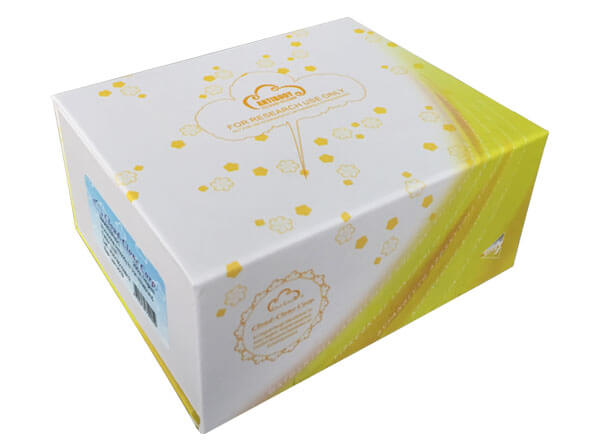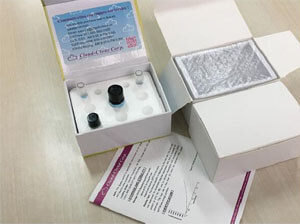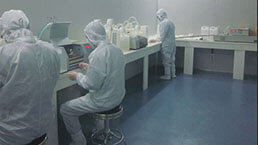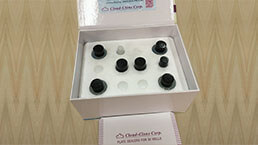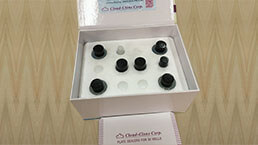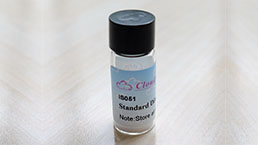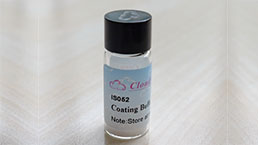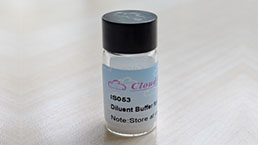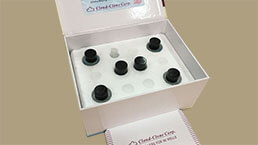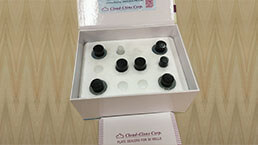ELISA Kit DIY Materials for E-selectin 

CD62E; CD62-E; E-Selectin; ELAM; ELAM1; ESEL; SEL-E; E-LAM; E-LAM1; E-SEL; LECAM2; Endothelial Leukocyte Adhesion Molecule 1; CD62 Antigen-Like Family Member E
- UOM
- FOB US$ 1,361.00 US$ 2,268.00 US$ 4,082.00 US$ 7,938.00 US$ 13,608.00
- Quantity
Overview
Properties
- Product No.KSA029Po01
- Organism SpeciesSus scrofa; Porcine (Pig) Same name, Different species.
- ApplicationsMain materials for "Do It (ELISA Kit) Yourself".
Research use only - Downloadn/a
- CategorySignal transductionCD & Adhesion moleculeTumor immunityInfection immunity
- Reagent Contents Capture Antibody, Detection Antibody, Standard, Streptavidin-HRP, TMB Substrate, 96-well Plate
- Detectable SampleSerum, plasma, tissue homogenates, cell lysates, cell culture supernates and other biological fluids.
- Applicable PrincipleDouble-antibody Sandwich ELISA for Antigen Detection
- Detectable Range1.56-100ng/mL
- Applicable Sensitivity0.55ng/mL
Sign into your account
Share a new citation as an author
Upload your experimental result
Review

Contact us
Please fill in the blank.
Specifity
The Abs in the kit have high sensitivity and excellent specificity for detection of Selectin, Endothelium (SELE). No significant cross-reactivity or interference between Selectin, Endothelium (SELE) and analogues was observed.
Usage
1. Coat the plates with 100μL per well of working solution of Capture Antibody.incubate overnight at 4°C or incubate at 37°C for 2 hours.
2. Aspirate and wash 1 time.
3. Block the plates with 200 μL per well of working solution of Blocking Buffer. Incubate at 37°C for 1.5 hours.
4. Aspirate and wash 1 time. The plates are now ready for sample detection, the protocol is the same as regular ELISA.
Storage
Antibodies, Standard and Streptavidin-HRP should be stored at -20°C. TMB should be stored at 4°C. 96-well Plate could be stored at room temperature. The contents are valid for twelve months. They are stable for one month after opening when stored at 4°C.
Support pack
Giveaways
Increment services
Citations
- Systemic involvement of high-mobility group box 1 protein and therapeutic effect of anti-high-mobility group box 1 protein antibody in a rat model of crush injury.PubMed: 22392147
- Endothelial gene expression and molecular changes in response to radiosurgery in in vitro and in vivo models of cerebral arteriovenous malformationsPubmed: 24199192
- Evaluation of the effects of Eserine and JWH-133 on brain dysfunction associated with experimental endotoxemiaPubMed: 25867462
- Serum lipid profile and inflammatory markers in the aorta of cholesterol-fed rats supplemented with extra virgin olive oil, sunflower oils and oil-productsPubMed: 26401576
- Adhesion molecules, chemokines and matrix metallo-proteinases response after albendazole and albendazole plus steroid therapy in swine neurocysticercosispubmed:28821422
- Evaluating Platelet Activation Related to the Degradation of Biomaterials Using Molecular MarkersPubmed: 32812629
- The role of the adipocytokines vaspin and visfatin in vascular endothelial function and insulin resistance in obese childrenPubmed: 31771561
- Association between Upper-airway Surgery and Ameliorative Risk Markers of endothelial function in obstructive Sleep ApneaPubmed: 31882827
- Hyperoside Protects Human Umbilical Vein Endothelial Cells Against Anticardiolipin Antibody-Induced Injury by Activating AutophagyPubmed: 32508661
- Effect of liraglutide on microcirculation in rat model with absolute insulin deficiency34119534
- Effect of dipeptide on intestinal peptide transporter 1 gene expression: An evaluation using primary cultured chicken intestinal epithelial cells34309968
- Construction of a rabbit model with vinorelbine administration via peripherally inserted central catheter and dynamic monitoring of changes in phlebitis and thrombosisPubmed:35126715



